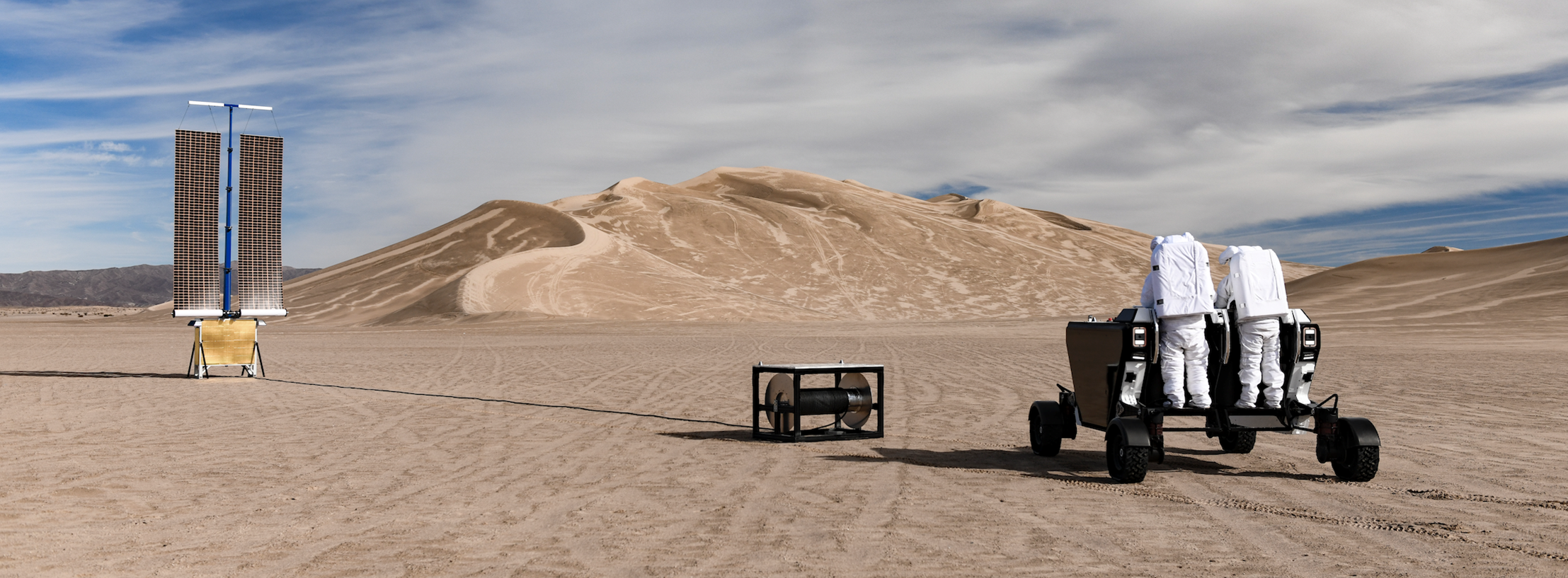This tech startup's Flex modular moon rover for astronauts could lead to Mars cars
Venturi Astrolab unveiled the moon rover concept this month.

Modular moon rovers could reduce the costs of surface exploration of the moon and, potentially, human Mars excursions, a California-based space-tech startup envisions.
The start-up, called Venturi Astrolab, announced the development of its Flexible Logistics and Exploration (Flex) rover on March 10. The rover, the company said in a statement will "enhance lunar and planetary mobility" and meet the demand for frequent missions that would support a permanent human presence on the moon.
The rover is being designed with NASA's Artemis program in mind. The program, which hopes to send astronauts to the moon in 2025 (the date may be delayed to at least 2026), will involve a series of missions, all in need of lunar transportation technology.
Lunar rovers (crewed or uncrewed) are far from strangers to the moon's surface, with the Americans, the Soviet Union and lately, the Chinese deploying missions that can crawl around the surface.
Related: NASA's Artemis 1 moon mission explained in photos
NASA's Apollo 15, 16 and 17 missions, which landed on the moon between 1971 and 1972, all brought with them exploration rovers that astronauts could use to drive around the landing sites. The Soviet Union sent several robotic rovers in the 1970s. The Chinese Chang'e moon missions have sent rovers to the near and far side of the moon in the past decade.
FLEX, however, is meant to counteract the trend of creating "bespoke" or custom rovers that tend to launch about once per decade to the moon or, for that matter, Mars, where NASA has deployed several rovers since the 1990s.
Get the Space.com Newsletter
Breaking space news, the latest updates on rocket launches, skywatching events and more!
"For humanity to truly live and operate in a sustainable way off Earth, there needs to exist an efficient and economical transportation network all the way from the launch pad to the ultimate outpost," Jaret Matthews, founder and CEO of Astrolab, said in the same statement.
"Currently, there is a gap in the last mile and Astrolab exists to fill it," Matthews continued.

FLEX, which is in the early stages of design, may be able to support two astronauts in an unpressurized environment, "in line with NASA’s Lunar Terrain Vehicle (LTV) requirements," Astrolab said.
That requirement set came from a 2020 call by NASA to industry to develop next-generation rovers for the lunar surface, which attracted big players such as a team composed of Lockheed Martin and GM, and another led by Northrop Grumman.
NASA released an updated solicitation to industry — a request for information — in 2021, which closed in October. NASA foresees the LTV flying to the moon no earlier than 2027 aboard Artemis 5, according to a recent SpaceNews report.
FLEX's distinction, Astrolab said, comes from "its novel mobility system architecture, which gives it the ability to pick up and deposit modular payloads in support of robotic science, exploration, logistics, site survey/preparation, construction, resource utilization, and other activities."
A prototype was recently tested for five days in the California desert near Death Valley, with former Canadian Space Agency astronaut Chris Hadfield participating in the feedback process on the vehicle's performance, Astrolab added.
Follow Elizabeth Howell on Twitter @howellspace. Follow us on Twitter @Spacedotcom and on Facebook.
Join our Space Forums to keep talking space on the latest missions, night sky and more! And if you have a news tip, correction or comment, let us know at: community@space.com.

Elizabeth Howell (she/her), Ph.D., was a staff writer in the spaceflight channel between 2022 and 2024 specializing in Canadian space news. She was contributing writer for Space.com for 10 years from 2012 to 2024. Elizabeth's reporting includes multiple exclusives with the White House, leading world coverage about a lost-and-found space tomato on the International Space Station, witnessing five human spaceflight launches on two continents, flying parabolic, working inside a spacesuit, and participating in a simulated Mars mission. Her latest book, "Why Am I Taller?" (ECW Press, 2022) is co-written with astronaut Dave Williams.









